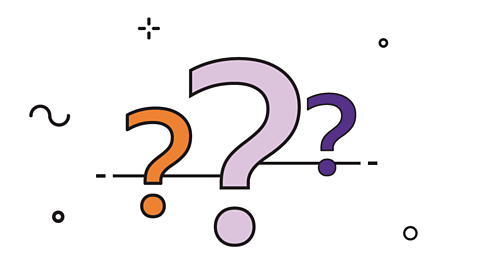Key Points
A force is a push or a pull that acts on an object due to the interaction with another object.
Force is measured in newtons (N).
Forces are divided into contact forces and non-contact forces.
What is a force?
A force is a push or a pull that acts on an object due to the interaction with another object.
Force is measured in newtons (N).
There are two main categories of forces - contact forceA force that act between two objects that are physically touching. and non-contact forceA force that acts between two objects that are not physically touching..

Did you know?
You cannot see a force but you can see its effect. For example, when you apply a force to push a door open.

Scalars and vectors
A physical quantity is something that can be measured.
Quantities can be a scalar quantity or a vector quantity.
Scalar quantities only have a MagnitudeThe size of a physical quantity..
Vector quantities have both a magnitude and a direction.
Vector quantities are represented using arrows. The larger the arrow the greater the magnitude of the vector.
Force is an example of a vector quantity.
The diagram below shows some examples of vector quantities. The arrow shows the direction.
The length of the arrow shows the magnitude, eg the size of the force in the first arrow.
Contact forces
Contact forces act between two objects that are physically touching.
Here are some examples of contact forces:
Tension
Tension is a pulling force exerted on an object by a string, rope or rod.
Friction
When two objects slide past each other they experience friction.
Friction is a force that acts between two touching surfaces and prevents or resists them moving against each other.
Air resistance
When an object moves through the air it experiences air resistance. This force acts against the direction of movement.
The faster the object is travelling the greater the air resistance.
Upthrust
Upthrust is an upwards force that acts on an object when it is in a fluid (a liquid or gas).
Thrust
Thrust is a driving force exerted by an engine to make an object move.
Normal reaction force
When an object pushes on a surface like a table, wall or the ground, the surface pushes back on the object with a balancing force.
The normal reaction force always acts at right angles to the surface.
Friction can sometimes be useful and sometimes it can be a nuisance.
Identify whether friction is useful or not in these situations.
The brakes on a bike
Inside the hub of the wheel on a bike
In the moving parts of the chain and gears
Friction is useful in the brakes, but it is a nuisance inside the wheel hub, chains or gears.
Non-contact forces
Non-contact forces act between two objects that are not physically touching.
Magnetic force
Magnetic force is experienced by a magnet or a magnetic material, eg iron, when placed in a magnetic field.
This force can pull the two objects together or push them apart.
Electrostatic force
Electrostatic force is experienced by a charged particle in an electric field.
This force can be either attractive or repulsive.
Gravitational force
Gravitational force is experienced by a mass when it is sufficiently close to another mass.
Gravity always pulls two objects towards each other. It never pushes them apart.
In the diagram, Earth pulls the satellite and the satellite pulls Earth. The forces are equal in size and opposite in direction.
A skydiver is falling from an aeroplane. Identify the two forces which are acting on her.
The gravitational force, or weight, acts downwards and air resistance acts upwards.
When forces act on objects they can have the following effects:
The object can speed up or slow down. Think about a race car travelling in a straight line whilst it speeds up and slows down.
The object can change direction. Think about a satellite orbiting Earth – the gravitational attraction between the satellite and Earth causes the circular motion.
The shape of the object can change. Think about squeezing a foam ball.
When a car turns around a corner, what force is causing the change of direction?
The change in direction is caused by friction between the tyres and the road.
Measuring forces

A force meter, also known as a newton meter, can be used to measure the size of a force.
Force meters have a spring inside them. The weight of the mass causes the spring to stretch.
It is important to ‘zero’ the force meter before you use it. This means adjusting it so that the reading is zero when there is no force acting on it.
If you don’t ‘zero’ the force meter, all your measurements will be inaccurate by the same amount. This is called a non-contact forceA force that acts between two objects that are not physically touching..

Test your knowledge
Quiz
Working safely in the lab
Find out how to spot risks, hazards and understand hazard symbols

More on Forces and movement
Find out more by working through a topic
- count2 of 16

- count3 of 16

- count4 of 16

- count5 of 16
